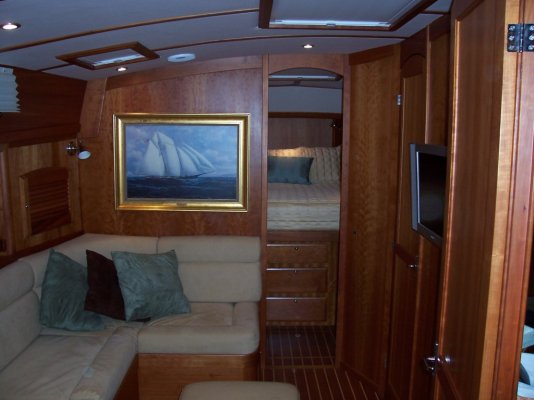SOMERS
Senior Member
**Interior Boat cleaning.
Depending where you live *especially in warmer climates, boats *just like houses can be *infected with mould / mildew spores *which are carried *in by the wind, it only takes about two weeks.
**I do not use the word "Infected" lightly because mould spores can and do affect *peoples heath especially those *who suffer from *Asthma.
*Some people have been forced to *permanently vacate their homes infected with mould.
**You know when your boat has been contaminated because of the inherent *musty smell .
*May i offer these suggestions, firstly there is no quick fix. Sorry !
Way back in Biblical times they used to burn moldy clothing.*
**Choose a nice hot sunny day with a slight breeze open up your boat all hatches doors and ports for 100% ventilation, start early , systematically and completely *strip *the entire *interior of you boat on to the dock.
*Why mineral spirits ?
*Mineral Spirits is used in thinning oil based paints and is relative harm less, however *i would do a" test run" on some suspected *surfaces.
*USE VERY SPARINGLY. a damp application works.
**At your own risk ( no smoking Roger ) wipe down all the hard surfaces *with Mineral Spirits *which is*available from your paint store by the gallon, using *sponges, large paint brush and *cloth diapers.
The brush is used to get in the nooks and crannies.
*
**Mould is part of the "living vegetable family" and requires only damp humid air to survive.
**A Story *:-
Effectively , you can kill your lawn if you spill*Mineral Spirits on the grass.
*Note :- *Any and all items including boat cushions that are to be returned to the boat later must be carefully cleaned, *some misc items can be plastic bagged. *Bedding goes to the laundry and *tumble dryer or dry cleaners.
*Bilge cleaning *has already been posted.
*SPECIAL NOTE
*Following this post you will find a special note *prepared by Carey his finding are well founded and should be adheared to.
** There for i retract my comments regarding the use of "mineral spirits" as being not safe.
*SOMERS
-- Edited by SOMERS on Tuesday 22nd of March 2011 03:31:35 PM
-- Edited by SOMERS on Tuesday 22nd of March 2011 04:08:28 PM
-- Edited by SOMERS on Tuesday 22nd of March 2011 05:35:25 PM
-- Edited by SOMERS on Tuesday 22nd of March 2011 05:54:07 PM
Depending where you live *especially in warmer climates, boats *just like houses can be *infected with mould / mildew spores *which are carried *in by the wind, it only takes about two weeks.
**I do not use the word "Infected" lightly because mould spores can and do affect *peoples heath especially those *who suffer from *Asthma.
*Some people have been forced to *permanently vacate their homes infected with mould.
**You know when your boat has been contaminated because of the inherent *musty smell .
*May i offer these suggestions, firstly there is no quick fix. Sorry !
Way back in Biblical times they used to burn moldy clothing.*
**Choose a nice hot sunny day with a slight breeze open up your boat all hatches doors and ports for 100% ventilation, start early , systematically and completely *strip *the entire *interior of you boat on to the dock.
*Why mineral spirits ?
*Mineral Spirits is used in thinning oil based paints and is relative harm less, however *i would do a" test run" on some suspected *surfaces.
*USE VERY SPARINGLY. a damp application works.
**At your own risk ( no smoking Roger ) wipe down all the hard surfaces *with Mineral Spirits *which is*available from your paint store by the gallon, using *sponges, large paint brush and *cloth diapers.
The brush is used to get in the nooks and crannies.
*
**Mould is part of the "living vegetable family" and requires only damp humid air to survive.
**A Story *:-
Effectively , you can kill your lawn if you spill*Mineral Spirits on the grass.
*Note :- *Any and all items including boat cushions that are to be returned to the boat later must be carefully cleaned, *some misc items can be plastic bagged. *Bedding goes to the laundry and *tumble dryer or dry cleaners.
*Bilge cleaning *has already been posted.
*SPECIAL NOTE
*Following this post you will find a special note *prepared by Carey his finding are well founded and should be adheared to.
** There for i retract my comments regarding the use of "mineral spirits" as being not safe.
*SOMERS
-- Edited by SOMERS on Tuesday 22nd of March 2011 03:31:35 PM
-- Edited by SOMERS on Tuesday 22nd of March 2011 04:08:28 PM
-- Edited by SOMERS on Tuesday 22nd of March 2011 05:35:25 PM
-- Edited by SOMERS on Tuesday 22nd of March 2011 05:54:07 PM

